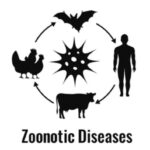About us
About Zoology Talks
Welcome to Zoology Talks, your go-to resource for comprehensive and accessible zoology notes. Whether you’re a student, researcher, or an enthusiast of the animal kingdom, our platform is designed to simplify complex zoological concepts and provide you with reliable, well-structured study material.
What We Offer
At Zoology Talks, we are committed to making the study of zoology easier and more engaging. Our content is curated to meet the needs of learners at all levels:
- Detailed Zoology Notes: Organized by topics, from animal taxonomy and physiology to behavior and ecology.
- Study Guides: Simplified explanations of intricate concepts to help you excel in your exams and research.
- Quick Reference Material: Charts, tables, and summaries for easy understanding and revision.
- Updated Content: Regularly refreshed material to keep pace with evolving zoological research and discoveries.
Our Mission
Our mission is to provide a one-stop solution for zoology learners by delivering high-quality, accurate, and easy-to-understand notes that empower you to achieve your academic and professional goals.
Why Choose Zoology Talks?
- User-Friendly Layout: Notes are structured in an intuitive format to maximize learning efficiency.
- Reliable Information: All content is fact-checked and sourced from credible academic and scientific references.
- Time-Saving: We condense complex information into concise, exam-focused notes to save you valuable time.
Join Our Learning Community
Whether you’re preparing for competitive exams, conducting research, or exploring zoology out of sheer curiosity, Zoology Talks is here to support your journey. Dive into the fascinating world of animals with us, and let’s make learning zoology a breeze.
Welcome to Zoology Talks—where learning zoology is simple, efficient, and inspiring
















